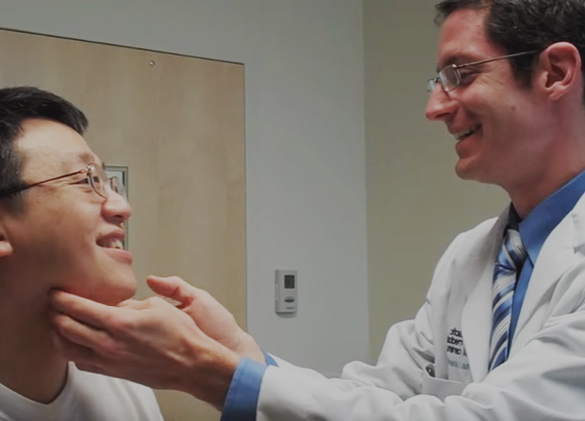See before and after photos and learn how revision facelift surgery is used to refine loose neck skin and repair a pixie ear deformity
One complication of facelift surgery is the pixie ear or satyr ear deformity. This is cause by excess tension on the ear lobe after surgery that causes the ear lobe to gradually become pulled down or stretched down onto the face. The result is an unnatural-appearing earlobe that is a giveaway that someone has had a facelift. Luckily if you have a pixie ear deformity there is hope as the ear can be fixed.
Correcting the Pixie Ear Deformity
This patient came to me looking to improve the sagging neck skin under her chin. She had a prior facelift performed by a different surgeon about 15 years ago.

I performed a revision facelift to retighten her loose neck tissue. At the same time I was able to address her pixie ear deformity by recreating a normal attachment of her earlobe to her face. The key to preventing a pixie ear deformity from forming to begin with is to avoid undue tension on the skin closure in the area of the ear lobe. It must be remembered that the neck and facelift is best obtained not by pulling on the skin but by creating a natural lift using the underlying muscle/fascia layer (SMAS).

This profile photo shown above further illustrates the repair of the pixie ear deformity and improvement in the patient's neck contours.
Find out more about this patient's revision facelift surgery here. You can see more before and after facelift photos here.


